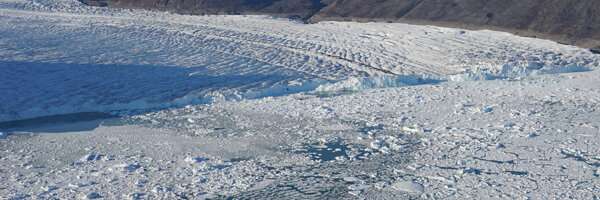Measuring iceberg production with earthquakes

Global warming is significantly reducing the volume of ice sheets—like the one covering Greenland—through melting or by shearing away blocks of ice that tumble into the ocean and become icebergs, a process known as calving.
The extent of calving cannot be measured through satellite observation. However, an international team led by French researchers from the CNRS and Paris Diderot University came up with the idea of using earthquakes generated when icebergs break away—felt hundreds of kilometres off—to measure this ice loss.
This breakthrough in environmental seismology has made it possible to quantify Greenland glacial shrinkage through calving between 1993 and 2013, by studying the approximately 500 glacial earthquakes recorded during that decade. It has thus been shown that calving resulted in the shedding of 370 gigatonnes of ice into the Arctic Ocean. This corresponds to 8%–21% of the mass lost at the glacial fronts, melting accounting for the rest. These findings have been published in Annals of Glaciology, April 10, 2019.
More information: Monitoring Greenland ice-sheet buoyancy-driven calving discharge using glacial earthquakes. Annals of Glaciology, April 10, 2019.
Provided by CNRS


















